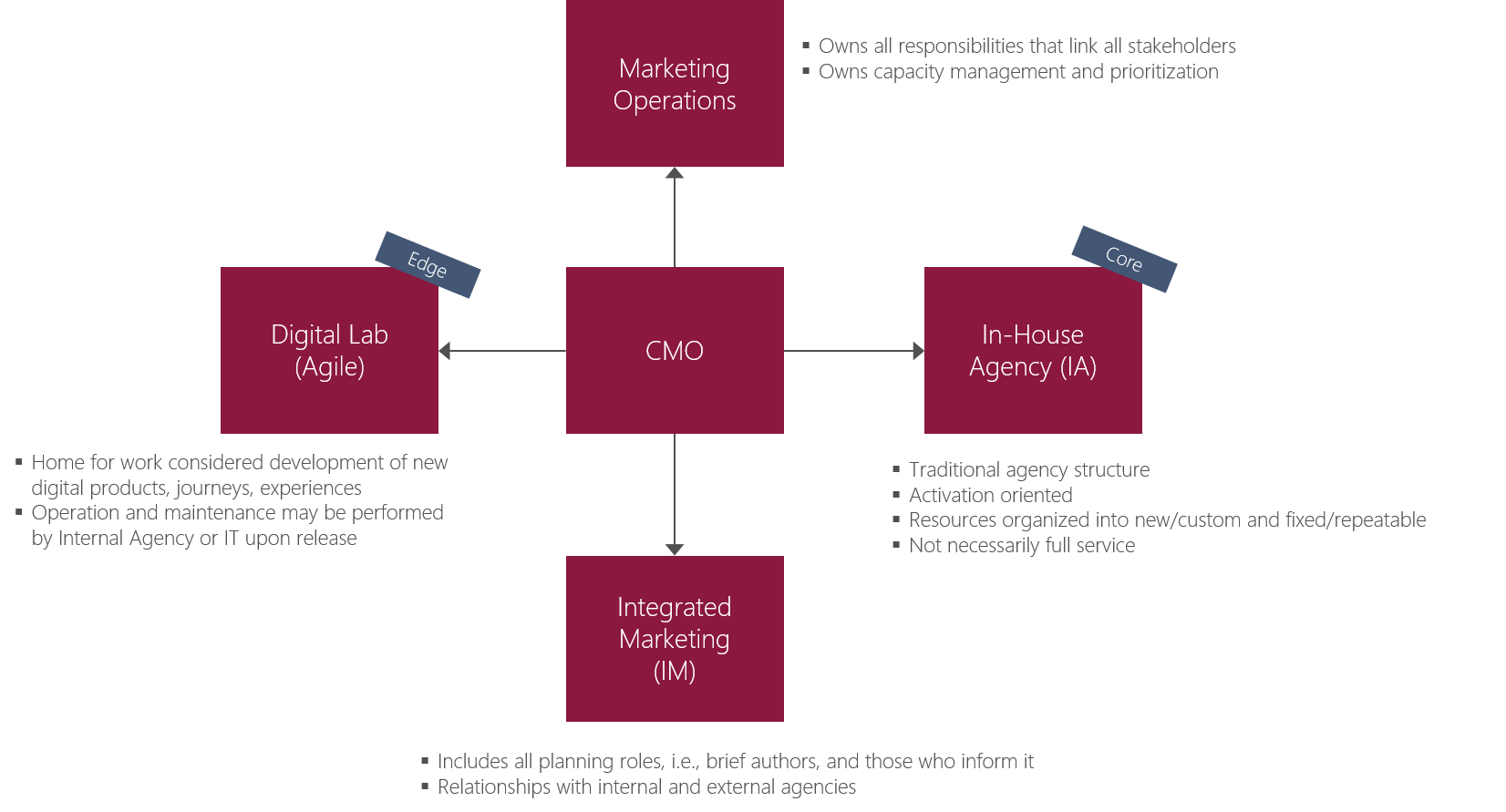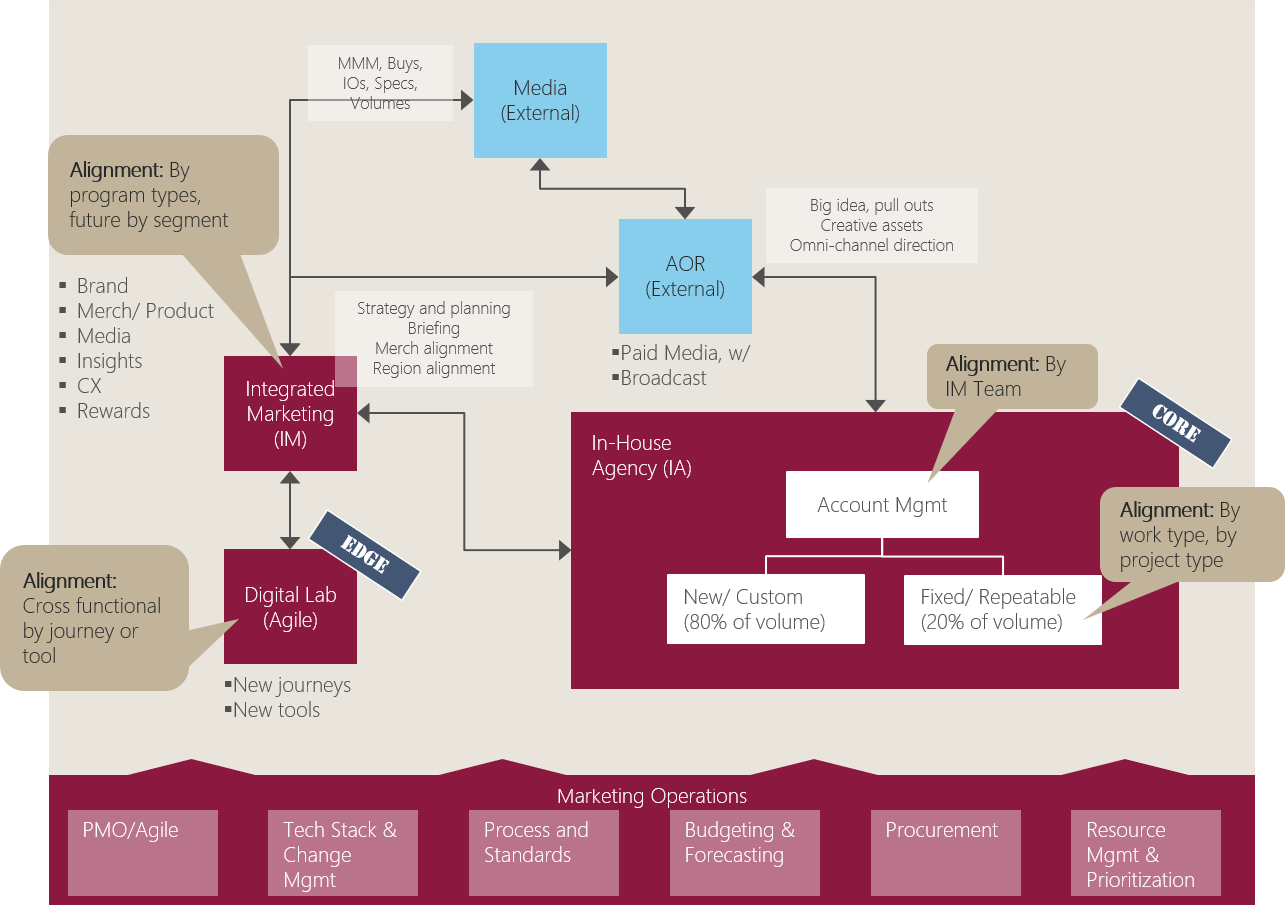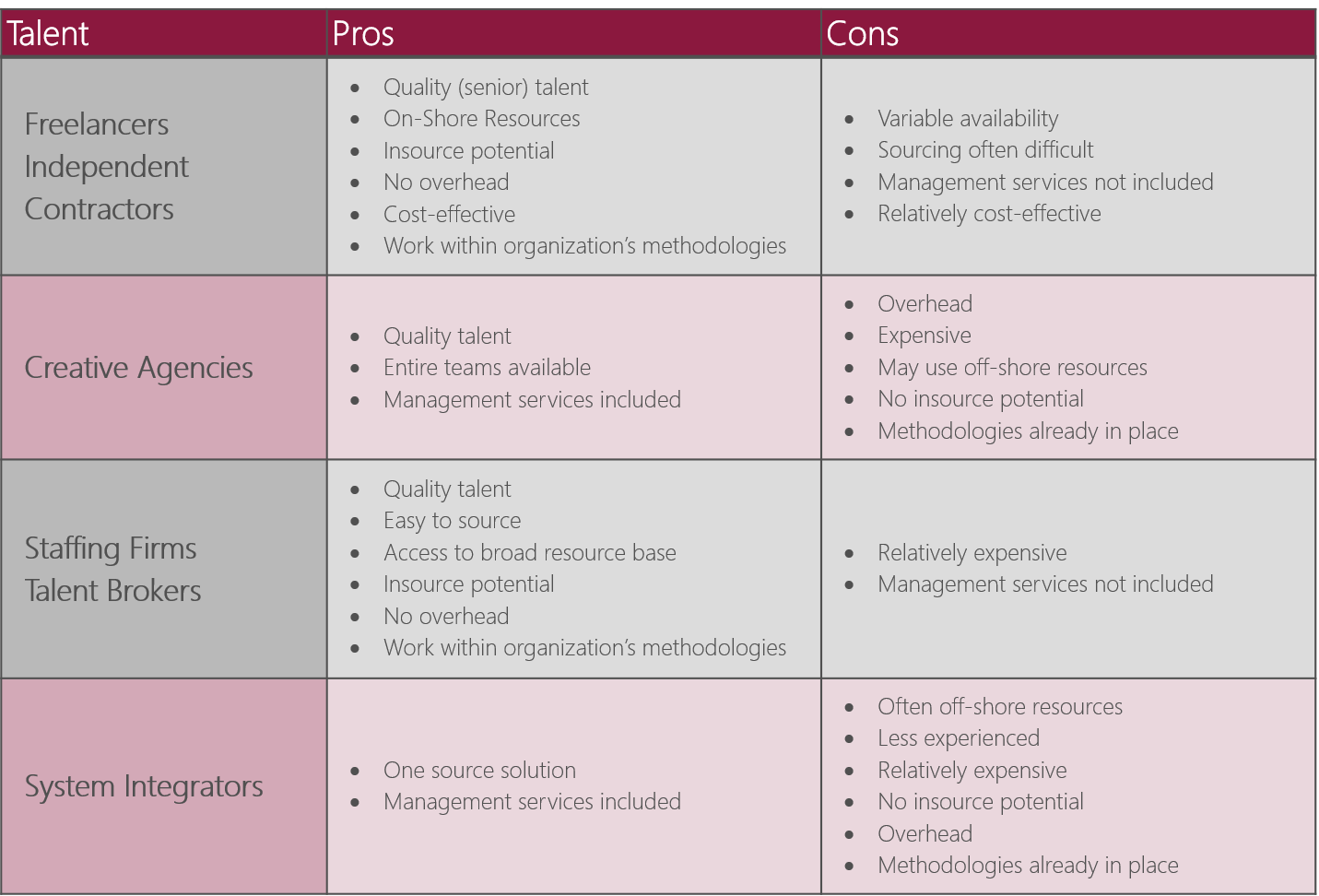
Despite huge changes stemming largely from movement to a digital world, how marketing works hasn't budged that much. Marketing organizations are still structured in much the same way as they were 20 or 30 years ago, with little integration between functions, teams, product lines and geographies. Study and after study indicates CMOs are keenly aware of the downsides for current structures, and the resulting talent shortfalls.
Correspondingly, despite a rapidly evolving marketing scenario, leaders remain tradition-bound with how they source people to do marketing's work. "I need three more people next year," is the MO many still take during an annual planning process centered on head-count adjustments. This simplistic approach to staffing doesn't work anymore. With evermore evident need for specialized skills like SEO, social, personalization, UX, analytics, etc., addressing issues surrounding "who" is best to make marketing activation within a modernized marketing organization design happen is more complex and intertwined than ever before.
Today, before staffing needs can be determined, a lot of questions have to be answered:
As marketing leaders redefine their operating models to handle the challenges of a digital age, they often tackle technology first, which is now less mysterious and a more transactional proposition than the people/process piece by 2017. While technology is often emphasized, more far-reaching in the overhaul process is the structure of the team.
Scott Brinker, of ChiefMarTech.com blog, concurs. "... while understanding how to build and manage a solid marketing technology stack is an important part of marketing in the modern age, it's only one piece of the puzzle," he said, adding that "new organizational structures and processes, new skills and talents on the marketing team, new management approaches to operating in a fast-paced digital environment" are the more important components.
These new team structures/marketing organizational designs are more complicated than in the past: There's more need for multiple teams (internal and external) with specific expertise. Marketers need to be organized by where they participate in the process (i.e. planning vs. activating); and they need to be further sub-divided based on the type of work they perform (i.e. fixed/repeatable vs. new/custom) -- all to boost quality and maximize productivity.
It no longer makes sense to organize the increasing number of marketing entities in a linear fashion, with a straight-line reporting structure. Instead, these groups need to overlap, possibly blur, requiring an abundance of carefully conceived and transparent processes and team design.
While most marketers agree that strategy and planning should be handled in-house, and that an in-house agency is a viable model for traditional activation, there are many other variables unique to each organization, making it impossible to prescribe a one-size-fits-all solution for marketing organization design.
New product development, mobile, media, agency-of-record, search, analytics, big data and analytics -- the decision on how to source these and other marketing functions depends on your location, industry and where you are on the digital transformation spectrum. Consulting organizations with expertise in marketing organizational design can help you avoid missteps -- and structure and source your teams to achieve maximum benefit.


Most everyone reading this blog remembers what a marketing organization looked liked in the not so distant past. There were: Managers who planned programs and campaigns. Those who managed the AOR. Creatives such as designers, writers and PPT experts. Event planners. A PR department. And a stable of independent contractors for special projects like research, photo and video shoots and fulfillment.
As you also know, it looks a lot different today. The expertise needed now is huge and highly specialized. The digital age has created the need for experts ranging from web design & user experience to SEO; from web analytics to development & integration; from paid media to social media marketing; from conversion rate optimization to email. Additional sub-specialties would make the list too long for this post.
These capabilities come in a variety of forms -- from which marketing leaders must choose. They're for hire as employees or available as freelancers. They'll augment your team for a time or work on a virtual basis for as long as you need. They're available as part of large agencies or boutique firms, or via marketing placement providers.
The trick is finding the right people for your organization as a whole, and your market, developing them and keeping them. Making sure you can attract the talent you need to take you through marketing transformation and beyond takes bringing on board yet another marketing specialist. Just as visionaries like Brinker defined the need for the coming together of marketing and technology into a single specialty (MarTech), ZeeJay Digital recognizes the need for a specialty combining marketing and human resources skills (MarHR).
Having a marketing pro with people officer skills at the ready, to help make the critical decisions regarding sourcing the internal and external team members you need is crucial to making your new marketing operating model work like it must.

More and more marketers will adopt agile development principles to activate their 2018 plans -- with an emphasis on continuous learning through iterative processes.
By creating small, self-organizing cross-functional teams with well-defined goals and a tight purpose, modern marketing leaders significantly reduce the time spent developing marketing programs --and delivering results.
Iterative processes allow teams to sprint toward achievement of goals, with frequent testing, calibration, review -- and improvements. To maximize impact, agile incorporates forums for sharing progress, so that other teams across the organization can benefit from the learnings of all teams, and continuously scale their ability to make impact.
In an agile model, strong inter-relationships are essential to staffing structures that work in today's digital environment. The ability to orchestrate all the teams -- planning and activation, and internal and external -- and make them accountable -- is critical to the success of new organizational design.
From brand managers to agency creatives, from marketing ops personnel to new venture developers, from digital specialists to the CMO, all marketing entities need to understand the importance of sharing information and insights that can help other teams do their jobs better.
In the new marketing ecosystem, teams must be tightly intertwined around aligned understanding of what they're delivering and why. Ultimately, rewarding marketing members who excel at working together will create the culture of cooperation needed to succeed in the digital era.